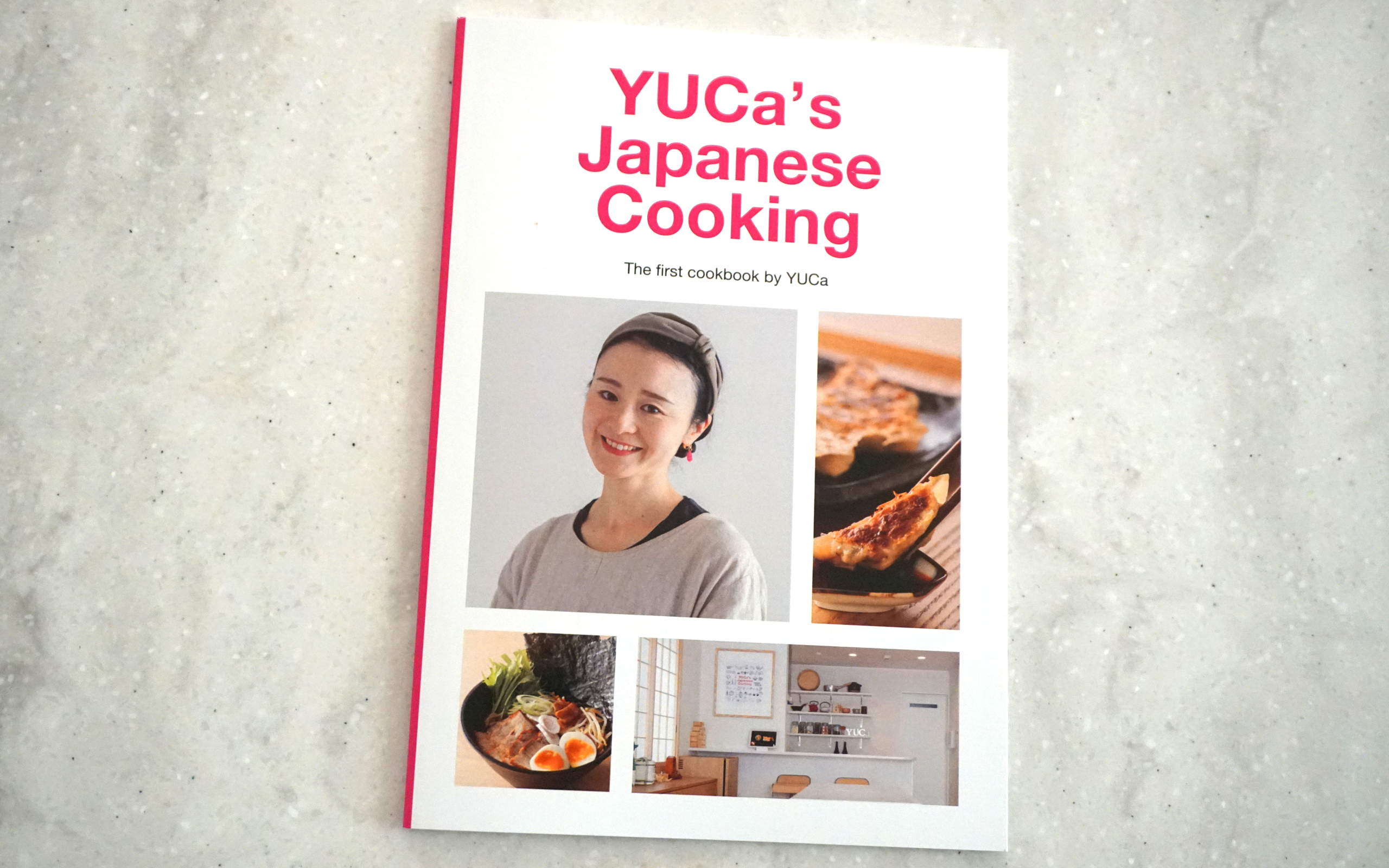Onigiri (Rice balls) おにぎり
It is no exaggeration to say that rice balls are a national dish of Japan. There are various types of rice balls, from simple ones that are simply sprinkled with salt, to those that contain various fillings, and those that are made from grilled rice. Onigiri is evolving day by day and is not only the main character of bento, but also an easy-to-eat snack.
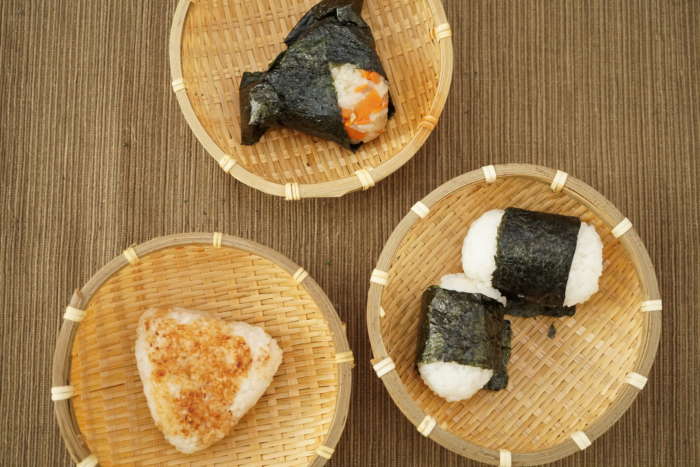
Onigiri is made by adding ingredients to cooked Japanese rice and molding it into a triangle, round shape, or bale shape.
My family also loves rice balls. In particular, simple salted rice balls that are simply sprinkled with salt and wrapped with seaweed are popular. At my home, rice balls appear not only for breakfast and lunch, but also when we have finished eating dinner and want to eat something a little more. So as we go on a picnic, we often bring rice balls with various fillings rather sandwiches.
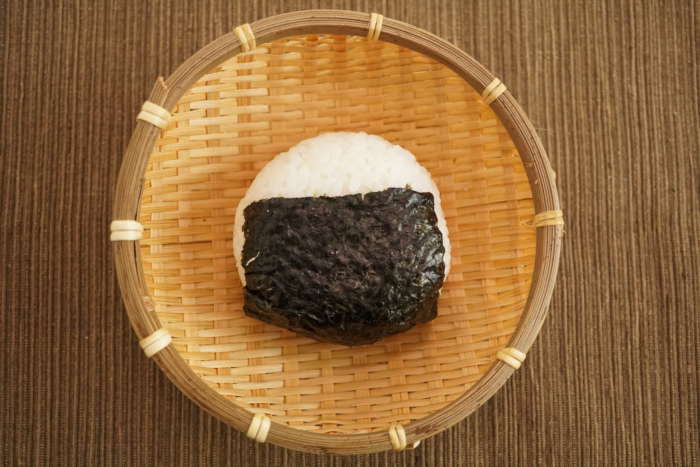
What is the difference with Onigiri and Sushi?
One of the key differences between onigiri and sushi is that onigiri is made with plain steamed japonica rice, while sushi is made of steamed japonica rice seasoned with vinegar, salt, and sugar.
On the contrary, what sushi and rice balls have in common is that they are dishes designed to preserve rice for a long time.
Rice vinegar is used for sushi. For onigiri, salt is sprinkled around rice balls, and antibacterial and preservative ingredients such as pickled plums and various pickles are often used.

Where you can buy Onigiri?
In general, you can buy rice balls at convenience stores and supermarkets in Japan. At convenience stores, not only standard ingredients but also unique rice balls made with seasonal ingredients are available. Although there are still few, there are rice ball specialty stores from individual stores to chains.
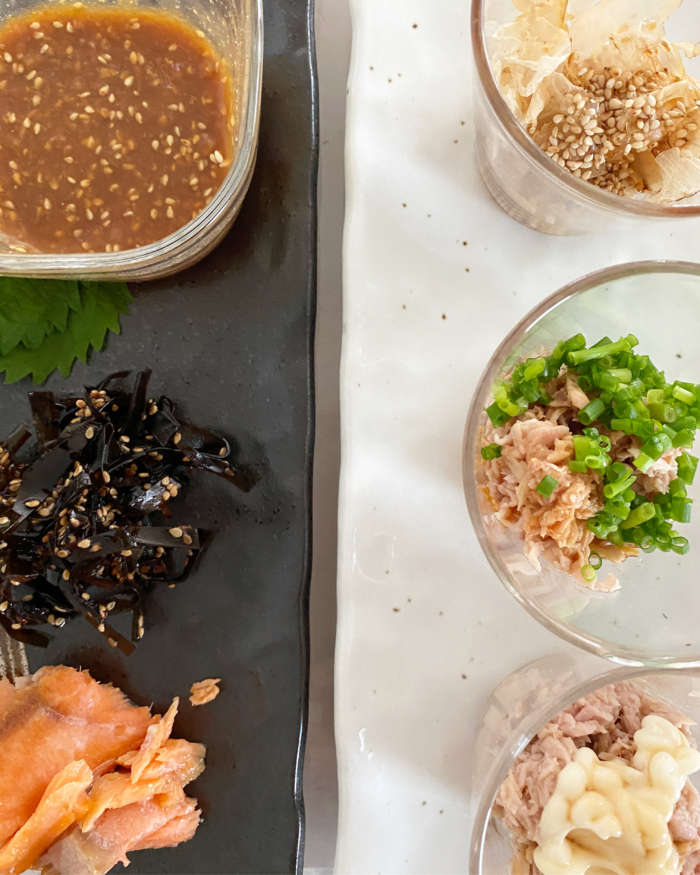
Traditional onigiri fillings
– Umeboshi (Pickled plum、梅干し)
– Sake (Grilled salmon、焼鮭)
– Kombu (Simmered kelp、昆布の佃煮)
– Tuna Mayo (Tuna mayonnaise、ツナマヨ)
– Mentaiko (Mentaiko、明太子)
– Cha-han (Fried rice、チャーハン)
– Yaki-onigiri (Grilled onigiri、焼きおにぎり)
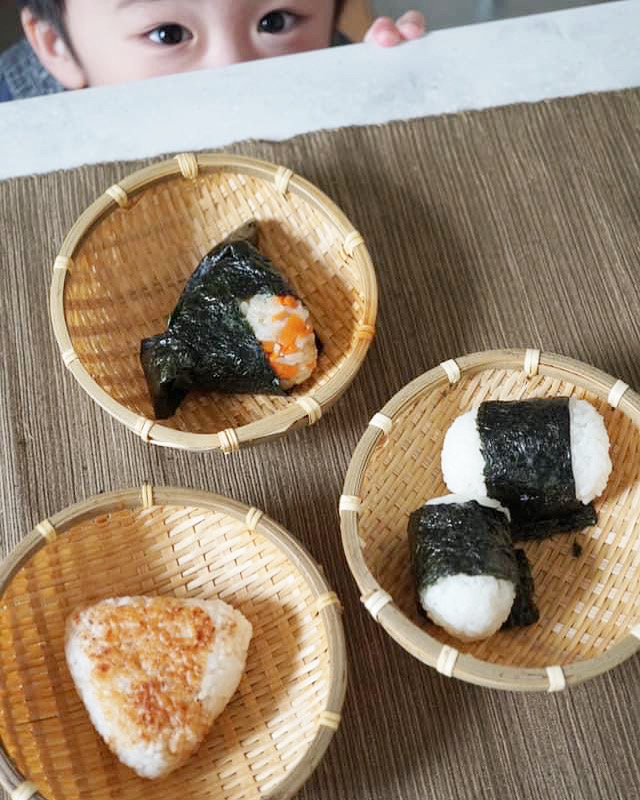
Let’s make various Onigiri!
– Okaka Onigiri [Recipe]
– Okaka Cheese Onigiri [Recipe]
– Salmon Onigiri [Recipe]
– Spicy Salmon Onigiri [Recipe]
– Tuna Mayo Onigiri [Recipe]
– Spicy Tuna Onigiri [Recipe]
– Kombu Onigiri [Recipe]
– Fried Rice Onigiri [Recipe]
– Grilled Onigiri Vol.1 [Recipe]
– Grilled Onigiri Vol.2 [Recipe]
– Red Bean Rice Onigiri [Recipe]
– Takikomi Gohan Onigiri [Recipe]
– Green Pea Onigiri [Recipe]
– Pork Miso Onigiri [Recipe]
– Nikumaki (Meat wrapped) Onigiri [Recipe]
– Dry Curry Onigiri [Recipe]
– Ume (Pickled Plum) Onigiri [Recipe]
Editor’s Note: This post was originally published on November 18, 2020.








